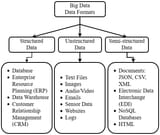Search Results
6/26/2025, 1:50:26 AM
>>16707522
A bit can contain either 0 or 1. A group of 8 bits makes a byte that store a number between 0 and 255. The number of possible values doubles with every additional bit.
We can interpret those numbers or even individual bits in any way we want, but for practical reasons we agreed on several standards.
To store negative numbers we agreed in two's complement.
To store floating point numbers we agreed on IEEE 754.
To store characters we agreed on ASCII and later on UTF8 to give meaning to each byte.
Sounds are sequences of numbers. The most common being 48000 signed numbers per second for every audio channel, plotting those numbers in time domain show you the sound wave.
Videos are sequences of images, images are sequences of pixels, and pixels contain color information stored as numbers. The most common pixel format is three bytes to store the red, green and blue brightness level.
Since video, images and audio are usually too large to be stored as is they are re-encoded using compression algorithms.
A bit can contain either 0 or 1. A group of 8 bits makes a byte that store a number between 0 and 255. The number of possible values doubles with every additional bit.
We can interpret those numbers or even individual bits in any way we want, but for practical reasons we agreed on several standards.
To store negative numbers we agreed in two's complement.
To store floating point numbers we agreed on IEEE 754.
To store characters we agreed on ASCII and later on UTF8 to give meaning to each byte.
Sounds are sequences of numbers. The most common being 48000 signed numbers per second for every audio channel, plotting those numbers in time domain show you the sound wave.
Videos are sequences of images, images are sequences of pixels, and pixels contain color information stored as numbers. The most common pixel format is three bytes to store the red, green and blue brightness level.
Since video, images and audio are usually too large to be stored as is they are re-encoded using compression algorithms.
Page 1
